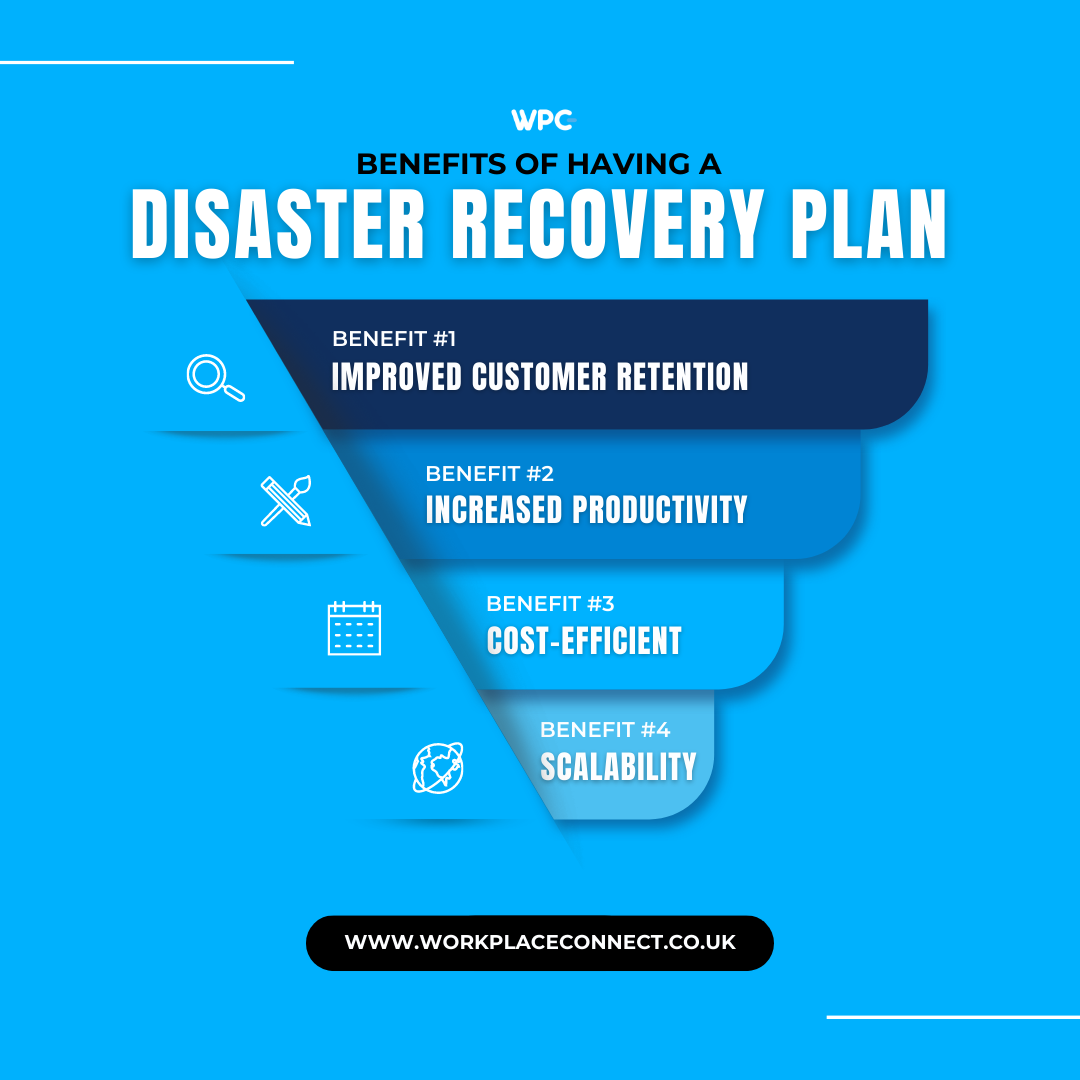Disasters can occur at any time, endangering your confidential data and severely hurting your business’s bottom line. However, by taking a few easy steps to create a disaster recovery plan (DRP), you may protect your company from data loss incidents and guarantee that your information is protected in the case of any potential catastrophe.
What is a Disaster Recovery Plan?
A disaster recovery plan (DRP) is a written list of procedures and tactics that an organisation implements to be able to restore and recover its vital data and systems in the event of a catastrophe or unforeseen incident. The plan explains what should be done prior to, throughout, and following a disaster to ensure business continuity and lessen the effects on the organisation’s operations.
A disaster recovery plan should cover both purposeful man-made disasters (such as the effects of terrorism or hacking) and unintentional man-made disasters (such as equipment failure).
Large volumes of mission-critical data are produced and managed by organisations of all sizes. The effects of data loss or corruption due to human error, technical malfunction, malicious software, or hacking can be severe. The recovery of company data from an earlier backup image therefore requires the creation of a disaster recovery plan.
Benefits of a Disaster Recovery Plan
Naturally, a disaster recovery plan outlines options for minimising disruptions and quickly resuming business following a crisis. It is a crucial component of the business continuity strategy and ought to be created to guard against data loss and facilitate adequate IT recovery.
Having a business disaster recovery plan can aid an organisation in a number of critical ways, in addition to the obvious advantage of better business continuity under any circumstances:
Cost-efficient
Plans for disaster recovery incorporate a number of elements that increase cost-effectiveness. As was already mentioned, the three most crucial components are prevention, detection, and correction. By taking preventative actions, risks from catastrophes caused by humans are reduced. When issues do arise, detection procedures are intended to discover them promptly, and corrective procedures recover lost data and provide a speedy return to normal operations.
The deployment of cutting-edge cybersecurity solutions, a broad assessment of potential risks, and regular upkeep of IT systems in top shape are all necessary to meet cost-efficiency goals. It reduces time and is more affordable to keep systems updated and well-maintained. The price of backups and maintenance can be further decreased by implementing cloud-based data management as part of disaster recovery planning.
Increased productivity
The efficacy and productivity of your team are increased by assigning precise roles and tasks as well as accountability, as a disaster recovery plan mandates. Additionally, it ensures human redundancies for crucial jobs, boosts productivity on sick days and lowers turnover costs.
Improved customer retention
Failures and downtime are difficult for customers to forgive, especially if they lead to the loss of important data. Planning for disaster recovery enables firms to deliver and sustain a higher standard of service under all conditions. Customers will receive greater support from you during and after a crisis if you lower the risks they experience from data loss and downtime, increasing their loyalty.
Compliance
The availability, uptime, and disaster recovery plans of significant businesses are relied upon by enterprise business customers, the financial markets, medical patients, and governmental agencies. In turn, these firms rely on their DRPs to maintain compliance with industry rules.
Scalability
Businesses can find creative ways to lower the expenses of archive upkeep, backups, and recovery by planning disaster recovery. The procedure is improved and made simpler by cloud-based data storage, which also adds flexibility and scalability.
The procedure for disaster recovery planning may simplify the entire IT process, get rid of unnecessary gear, and lessen the possibility of human error. By streamlining the company’s operations and making it more profitable and robust before anything goes wrong, the planning process itself turns into one of the benefits of disaster recovery planning.
How Can You Start?
To create an effective DRP, follow these steps:
Perform a risk assessment
Any DRP must include a risk assessment since it can help identify potential risks, vulnerabilities, and hazards that might have an influence on how a company operates in the case of a disaster. You may determine and assign priority to the risks that your business confronts through a risk assessment, and you can create the best plans of action to reduce those risks.
Create a recovery strategy
Create a plan of action for handling each risk that was found during the assessment process. This can entail creating data or system backups, utilising cloud services, using redundant hardware, or building other physical sites for your company’s operations.
Decide on availability requirements
The capacity of a system, application, or information to be usable and accessible during a crisis or outage is referred to as availability. Find the resources (such as servers, databases, etc.) and services (such as email, customer service) that are essential for your business operations and figure out how quickly they must be restored following an incident to calculate your company’s availability requirements.
Create backups
Decide on the best method for properly keeping your backups off-site so that you may access them when necessary. Choose the backup approach that best suits your needs, whether it be complete or incremental backups.
Without backups, crucial data and information may be permanently lost, harming your organisation’s finances and reputation. In order to preserve business continuity and lessen the impact of a disaster on your company’s operations, backups can also be used for recovering systems and data to the condition they were in before the disaster struck.
Test your strategy
Regularly test your DRP to ensure that it will function as intended in the event of an emergency. A DRP can only be effective if it can be carried out correctly, and testing can assist find and fix any weaknesses in the plan.
Testing a DRP offers the chance to discover areas that could want improvement or processes that require alterations. It enables you to confirm that the strategy is comprehensive, current, and applicable.
Educate your staff
When a disaster happens, your employees are frequently the primary line of defence, and the results of a recovery attempt can be greatly impacted by what they do.
Employees who have received DRP training are more likely to know exactly what to do in an emergency. Additionally, it equips them with the information and abilities necessary to do their tasks efficiently, reducing the possibility of mistakes or delays in the recuperation process.
Contact Us Today
Do you worry about the security of the data? Don’t leave it to chance – contact us for every one of your DRP needs! You can be sure that your data and systems are in competent hands thanks to our state-of-the-art technology, committed team, and sector-leading expertise.







